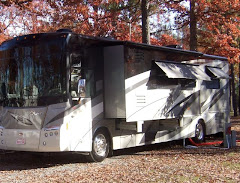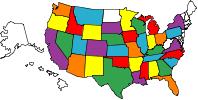
With desert sunshine and a forecasted high temperature of 90 degrees, we decided to stay close to home today and explore Tucson Mountain Park, a 20,000 acre preserve about 15 miles west of Tucson. This was our second visit to the park. Our visit was three-fold. First, we were there to take pictures. (My camera lost its charge on our first visit.) Second, we wanted to pick up a few more geocaches in this beautiful area. This shot was near our first find, which was not too far from the south entrance to the park.
While Paul searched for our second cache of the day, I was distracted by this stand of very orderly saguaros.
I love these towering ocotillos. They look like bright red paintbrushes sticking out of the ground.
Here's a close-up of the ocotillo flower. This desert plant typically blooms from April to June. They are absolutely beautiful this year.
I focused my attention back to the task at hand. There's Paul locating our second cache of the day.
The journey to our third cache location took us on a bit of a hike. Crossing this dry river bed, we reminded ourselves that we are, indeed, in the desert. And, the desert is home to lots of creatures to be careful around. Sure enough, as we closed in on the cache location, we saw one of these creatures guarding the find.
It was a Mohave Rattlesnake! These two desert cachers made a hasty retreat, crossing the dry river bed and hopping back into the safe confines of our Jeep. And, no. This isn't the actual snake. (Like either of us was going to stop and take a picture!) One of us decided we were done caching for the day. (Can you blame me?) So, we headed for the nearby Arizona-Sonora Desert Museum where we snapped a photo of this highly venomous look-a-like on display.
A visit to the museum was the third reason for today's trip to the park. The 21-acre facility, located inside Tucson Mountain Park, is a world-renowned zoo, botanical garden and natural history museum.
This is as close as we have ever been, and ever want to be be, to a mountain lion. Thankfully, there was a big plate of glass between us and this grooming cat.
Here's the big kitty from the other side.
The botanical garden lets visitors get up close and personal with the Sonoran Desert.
I just had to get a close-up of this flowering cactus.
As we strolled through the museum's "cave", we spotted this very sparkly exhibit of wulfenite and mimetite.
Between the heat of the afternoon and the off-the-charts pollen count in the blooming desert, we cut our visit short and headed back to the moose. Although we only saw about half of the exhibits, we highly recommend a visit to the museum for anyone passing this way. With more to see, we look forward to coming back next winter.
One of the things I've been trying to photograph while we're here is a Tucson sunset. And, so far, I just haven't been in the right place at the right time with a camera to get a nice shot. Last night, though, I saw this and quickly grabbed the camera. It's the view to the north, with the Tucson Mountains in the background and a reflection of the setting sun in the west, as seen in the reflection of our big, curved windshield. Cool, huh?

































































